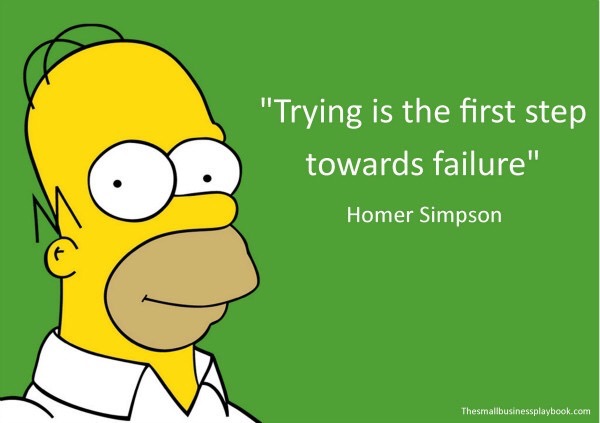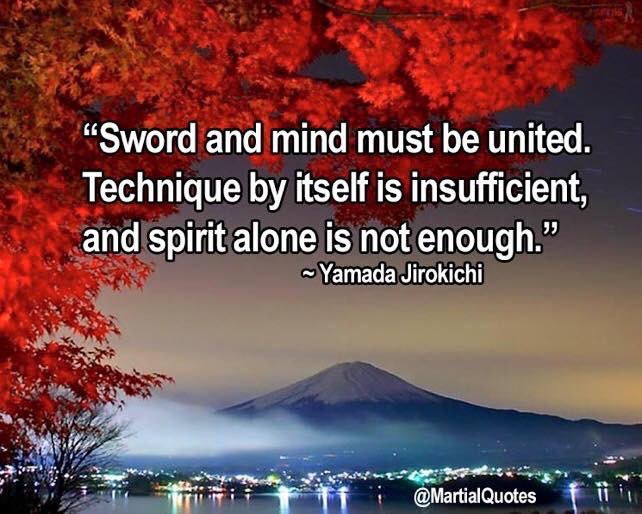Ruminations
In the presence of greatness...
May 27, 2017
There is a scene in Kung Fu, a TV show from the early '70s that goes something like this:
Master Po: Close your eyes. What do you hear?
Young Caine: I hear the water, I hear the birds.
Po: Do you hear your own heartbeat?
Caine: No.
Po: Do you hear the grasshopper which is at your feet?
Caine: Old man, how is it that you hear these things?
Po: Young man, how is it that you do not?
Do you ever marvel at the skills of a master? It may be a musician, or a chef, or a tai chi practitioner. They have refined their art to such an extent that each movement seems to be effortless and so logical. You think, after watching them for a while, that you, too, could step up and play like that, cook like that, do the form like that. Then you make the attempt (if you make the attempt), and you fail. Miserably, completely.
It's not that you don't have potential, not that the desire is lacking, but that you have put in the hours, months, YEARS of practice needed to make such a thing look so simple and effortless.
In high school, I got a guitar for my birthday. It was a very nice guitar, with a beautiful satin finish, and quality components. But there was a problem - the frets buzzed. I was a beginner on the guitar, but every time I played it, the frets made a buzzing sound. Passing the music store one day, I dropped in to talk to the staff.
"How is the new guitar?", they asked.
"It looks great," I replied, "but the frets buzz."
"How odd. Bring it in and we can file down the frets a bit", they said.
A week or so later, my father dropped the guitar off to get the frets filed down. He brought it back to me a few days later, and I took a few strums on the now-fixed guitar, The frets still buzzed.
I was frustrated.
So Dad and I went back to the store, and Dad said, "Look, this guitar has buzzing frets and you said you would fix it, but my son says it's still buzzing."
"How odd," said the sales fellow, a hippie drummer/guitar player that worked there. "Let me give it a try." The hippie took my buzzing guitar and played several minutes of the sweetest guitar music I had ever heard. With nary a buzz the entire time.
It was me, or rather my poor technique, that was causing the guitar to buzz. Red-faced, I grabbed the guitar, thanked the hippie for his time, and followed my dad to the car.
I learned a big lesson that day - If you fail to accomplish a task, it is likely an internal rather than external road block. Don't be too quick to blame external forces, or your tools, for failure to accomplish what you are trying to do.
The masters have practiced, practiced, practiced, correcting their form, making tiny adjustments, slowly, over time, until the result is a beautiful product.
Which brings me to my buddy, Joe.
I'm not sure of his formal title (Savant may be part of it), but he troubleshoots and repairs electronical devices for a living. And not just any electronical devices either; he fixes medical equipment like X-ray machines, and catheter labs, and various other doctor doo-daddery that, you know, KEEPS YOU ALIVE! Not only does he do this for a living, but he is the MAN, the go-to guy, the top dog, the big kahuna or, as they say in the medical business, the SHIZZ.
Oh, and he sometimes helps me on my layout.
Now I need to explain that Joe gets more accomplished on my layout in an hour than I do in a week of puttering. I've watched him in action - he uses the same tools as I do - soldering iron, solder, wire, files, opti-visor, rum. Yet, in his hands, those tools create beautiful things - perfectly shiny solder joints; tight wraps around crisply exposed bus wire; squarely mounted tortimusses with ramrod straight throw rods; and my favorite - finely prepared turnout throw bars, installed with perfect spacing and electrical isolation.
Joe is the Master Po of railroad wiring.
And I know how he does it. I can see him do it. But I can't duplicate it. Joe's efficiency and artistry comes from literally years of practice, every day fixing devices that are infinitely more complicated than anything we have on our layouts. He has developed instinctive troubleshooting procedures that allow hime to observe a situation, diagnose the problem, develop a remedy, and implement the fix. His efficiency is born out of a thousand repetitions of problem-solving, similar to the thousands of hours practicing to become a maestro.
By comparison, my attempts are clumsy. Oh, they will suffice, for a while (unsoldered twisted wire can maintain electrical contact for nearly 20 years…ask me how I know that). If you look under my layout, you can see where Joe has been - the solder joints are cleaner, the wiring layout is straighter, no solid wire in sight.
Joe is Master Po to my grasshopper, Obi Wan Kenobi to my Luke, Gandalf to my Bilbo, Spock to my Kirk, Chen Man Ching to my Ben Lo.
And I will continue to observe, and learn, and marvel, at the work of my very own Master Po - Master Joe.
How I keep calm before an operations session
May 16, 2017
Here's what I do when I'm not modeling:
(By the way, that is NOT me doing the form)
(By the way, that is NOT me doing the form)
Yoda brings it!
Nov 28, 2016
I know that it's not railroad or modeling related, but I just HAD to post this video of Yoda schooling Luke on Dagoba.
To boldly go where no train has gone before!
Aug 30, 2016
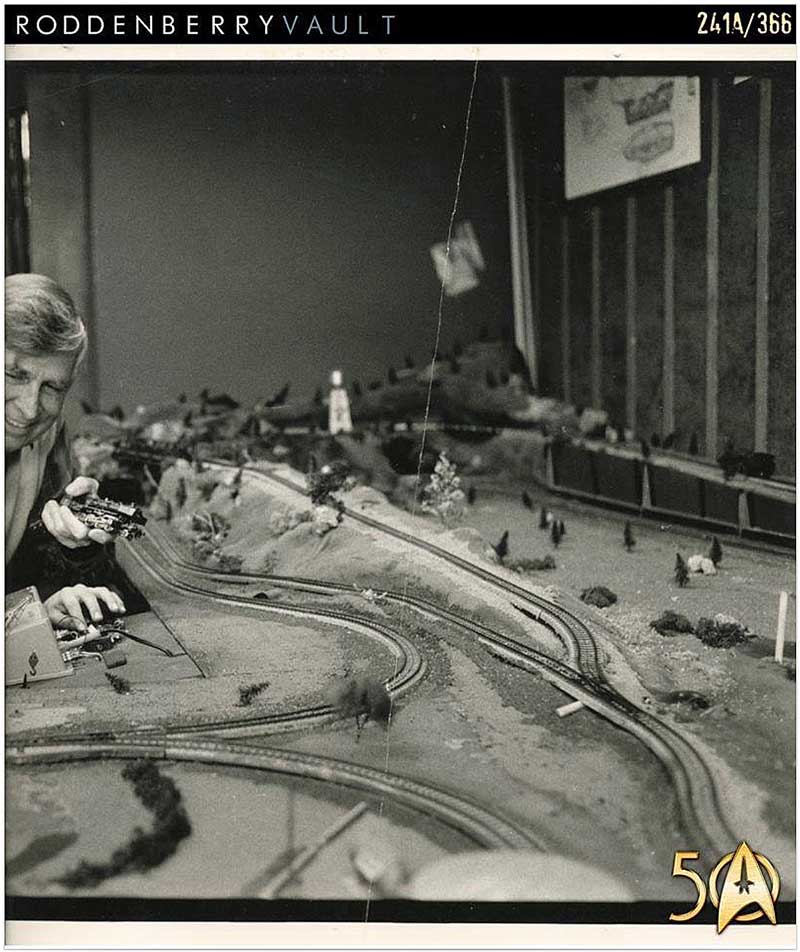
It turns out that Gene Roddenberry was a model railroader!
I've been a fan of Star Trek (in all its incarnations, but specially the Original Series), since the late 60's. The first episode I saw as a child, Charlie X, freaked me out so badly that I couldn't watch the series the rest of the season. I stared watching again the following year.
Can you imagine the layout you could build on the holodeck?!!
Anyway, it looks like Gene had a pretty nice layout there! Live long and prosper!
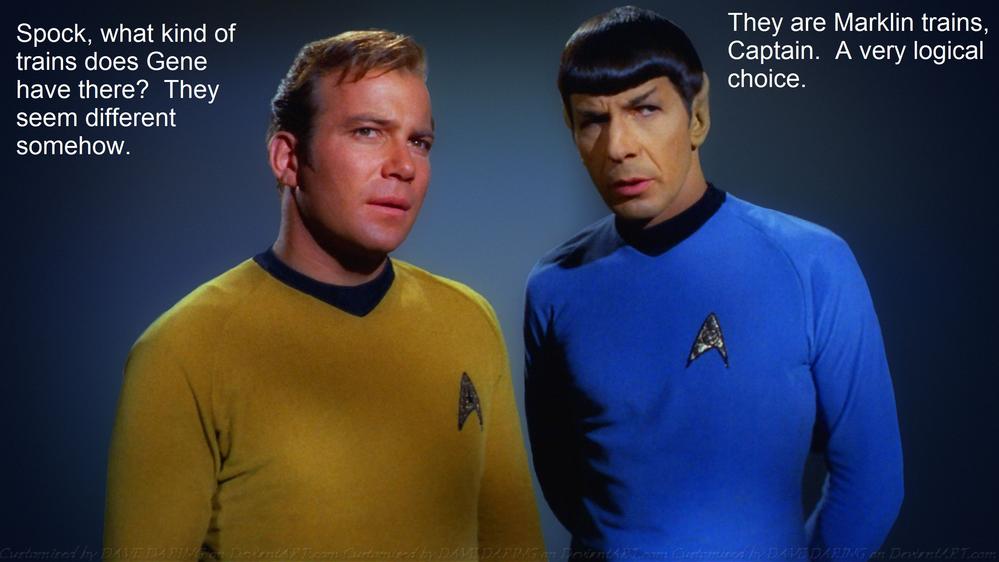
There's no squealing in model railroading!
Jun 16, 2016
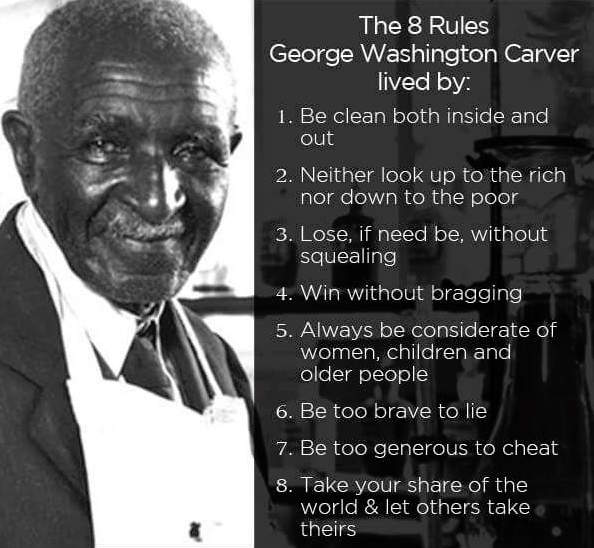
I've always had a fondness for George Washington Carver. You know, the peanut guy.
His story fascinated me as a child, and I've read a couple of biographies that cemented my fascination. He seemed to be a genuine person, and the world needs more genuine people today.
He was born into slavery near Diamond, Missouri. His life is too interesting to recount here, but Wikipedia has a good summary. He studied and taught at Iowa State University, my alma mater, before moving to Tuskegee Institute, In fact, I attended all my math classes in Carver Hall on the ISU campus.
I came across this graphic the other day, and enjoyed thinking about this great man for a while.
Peace, love, and model railroading. And no squealing.
Zen Mind, Beginner's Mind - applied to model railroading
Jun 14, 2016
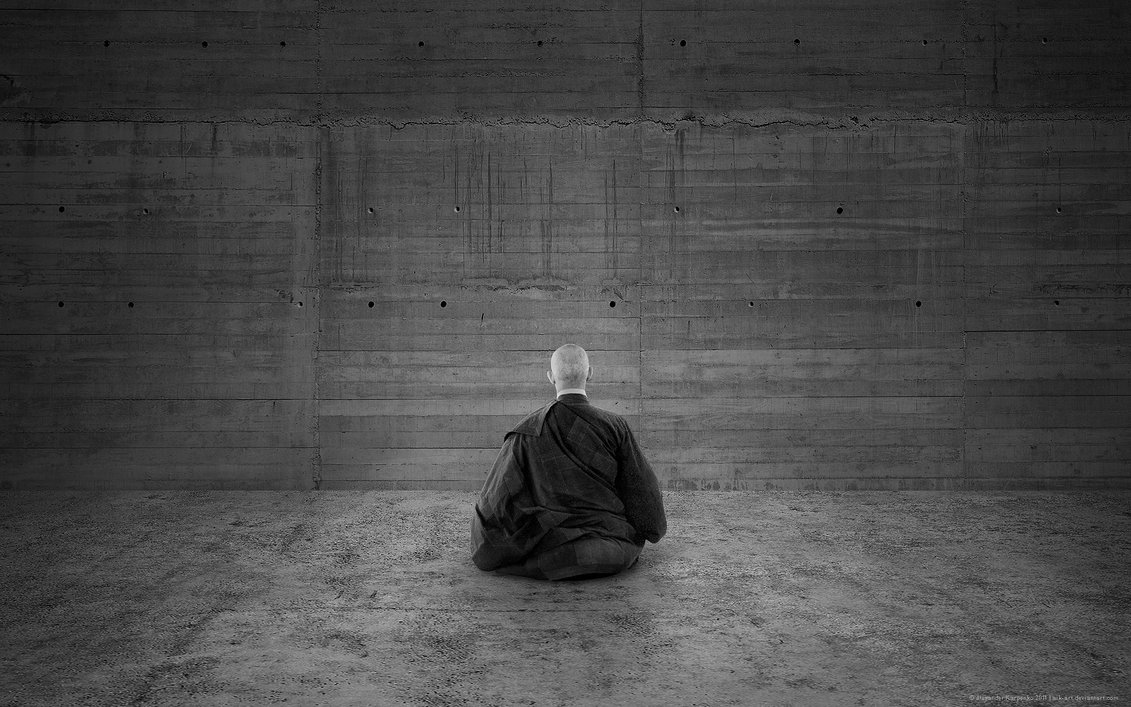
"In the beginner's mind there are many possibilities, but in the expert's there are few."
So begins one of the most beloved American Zen books, and one I devoured during my quest for enlightenment in the early ‘80s. That was back before I got into model railroading.
Seldom has such a small handful of words provided a teaching as rich as has this famous opening line of Shunryu Suzuki's classic. In a single stroke, the simple sentence cuts through the tendency that students have of getting so close to Zen as to completely miss what it's all about. When recently rereading this passage, I was struck by its application also to model railroading.
“We should not hoard knowledge; we should be free from our knowledge.”
― Shunryu Suzuki, Zen Mind, Beginner's Mind: Informal Talks on Zen Meditation and Practice
When he spoke of "beginner's mind," I think Suzuki Roshi was pointing to that kind of mind that's not already made up. The mind that's just investigating, open to whatever occurs, curious. Seeking, but not with expectation or grasping. Just being there and observing and seeing what occurs. Being ready for whatever experience arises in this moment.
I can think of many times that I have observed this behavior, frequently at layout tours. The new modeler will ask a million questions (What is that? How did you do that? Why is this thing the way it is?), but the old hand will briskly walk around the room, give a curt nod, and be on his way.
Why is that? Does the old hand know all the answers? Does this layout offer nothing new to him? Maybe it’s not his scale, or his gage or his prototype or his era. Does that mean the layout has nothing new to offer him? Or has he moved from “learning by observing” to judging?
It's often the case that when people begin sitting zazen (zen meditation), first they'll be curious about all of these forms we have. Then they'll get kind of interested in practice, and they'll really get into it. They'll start to learn the forms, and then they're experts. They know the forms, and they're looking around: "He didn't do it right...She didn't do it right!" The Form Police. Suzuki Roshi used to say that you should just take care of your own practice; don't concern yourself with other people's practice.
So it is with some people in our hobby. We call them rivet counters. Or elitists - those who know all (or think they know all) but are unwiiling to share or teach others. Those people are maddening because you know that they have SO much to offer, but seem to hoard their knowledge, dishing out wisdom to a select few deemed worthy.
Fortunately, the vast majority of modelers are not like that, and freely share what they have learned about their chosen prototype or area of special expertise. To those people, I say BRAVO!
So please, cultivate your beginner's mind. Be willing to not be an expert. Be willing to not know. Not knowing is nearest. Not knowing is most intimate.
Every wonder what it's like working on a long layout to-do list?
Jun 10, 2016

Yeah, it's kinda like that…
Shake what yer mama gave ya
Jun 01, 2016
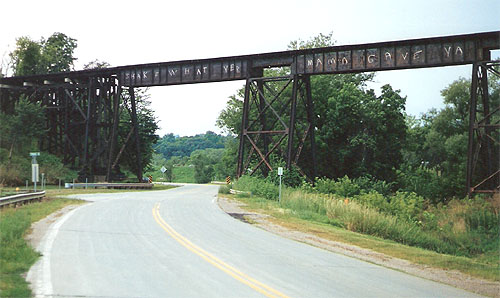
I grew up in the country west of Council Bluffs, Iowa. Our house was located off old Highway 6, and very near the old Rock Island line that ran from C.B. north to Avoca and on west to Des Moines and Chicago. The line was fairly active in the late-‘60s, but traffic petered out in the ‘70s. The Rock was shut down in 1980.
In 1984 the old Rock Island line out of Council Bluffs became part of the Iowa Interstate (IAIS) Railroad. For years, it ran a couple freight trains a day on the old Rock Track, but these days traffic is increasing with the addition of intermodal (!) traffic on this old and historic track.
A distinctive landmark on the old Rock Island track was the single track bridge crossing Old Highway 6 (McPherson Ave) and Little Mosquito Creek, just west out of Council Bluffs. This deck plate girder bridge was built in 1901, and has a total length of 320 ft. The longest span is 70 ft.
I passed under that bridge a thousand times when I was growing up. When I was in junior high, a friend challenged me to climb up and walk across the bridge, but I was too afraid to do it. Somebody had been up there, though, because the most distinctive feature of the bridge was the graffiti on the west side of the bridge, saying “SHAKE WHAT YER MAMA GAVE YA” in shaky letters. Every time I walked, or jogged, or biked, or drove under that bridge I tried to imagine that tag artist leaning over the tracks, writing those letters upside down! Yikes!
Several years ago, my parents moved to a new house, up the hill with a great view of the Mosquito Creek valley, the Iowa Interstate tracks and the bridge. Whenever I visit, I listen for the sound of the trains crossing the bridge. It sees a lot of action these days as the IAIS traffic continues to grow.
Alas, the graffiti has been painted over as part of a bridge approach upgrade project in 2014. But I still adhere to the advice that tag artist gave me those many years ago, and “shake what my mama gave me” as often as I can!.
Here is a link to more information at bridgehunter.com




Modeling is like cooking
May 06, 2016

Another area of great interest to me (which is obvious if you’ve ever seen me) is eating delicious food. And preparing delicious food. As we modelers often look to develop techniques and skills to make the hobby more enjoyable, so does cooking involve learning skills to make cooking more efficient. One of the cooking techniques that I’ve found useful in BOTH cooking and modeling is the concept of mise en place.
In French, mise en place means “putting in place”. As it is used in preparing food, it is the concept of gathering all the ingredients and tool needed to prepare the dish or meal before starting to cook. And implicit in that process is that you take to time to think through the process to know what items are required.
How many times have you started a project (let’s say scenery) like this: You pull out the ground foam and start to sprinkle it on the area. Then you need some diluted white glue, so you put down the shaker and go get the box that has the white glue, but then you need to go to the sink to add water and DARN! you need to add a drop or two of dish soap to reduce surface tension, and the soap is upstairs. So you trudge upstairs to get the soap and mix the diluted white glue. Then you decide that you went to mask off an area so that it won’t get scenery on it, but the roll of tape is in the garage, so you make another trip upstairs. Then you want to add some burnt grass foliage to tone down the bright green and “Where did I put that burnt grass applicator?” So you stop everything and rummage through all your boxes of scenery material until you find that parmesan shaker of burnt grass stuff.
By the time you get any scenery work started, you are exhausted and ready to spend your night watching Netflix instead!
With just a little bit of planning, you can think through the task, and gather the materials that you need before you start.
Mise en place can be seen as an organizing philosophy that you can apply outside of the kitchen to almost every aspect of your life.
This is not a new or foreign concept to us. When you set aside all the things you need to get out the door in the morning, that’s mise en place. When you follow an evening routine with your kids (e.g., bath, books, bed), that’s mise en place too. When you gather your modeling tools and material that you need to start or complete a new structure for the layout — yup, mise en place.
An important part of mise en place is cleaning up as you go, and completely cleaning and organizing your tools after the project is completed. This makes it easier to find the tools when they are needed for the next project. This is especially important in a commercial kitchen, where multiple chefs are using community cooking tools. Similarly, in the hobby this post-project cleanup and organization can be important if you host work nights or have multiple people working on your layout. Even as a lone wolf modeler, having the tools put back into their proper location make it easier to start the next project, whether it be tomorrow night or next week.
Author Dan Charnas says it’s about working clean (Work Clean is the title of his new book all about mise en place):
Mise en place is not about making things tidy, it’s not about things looking clean. It’s about being able to work clean, which implies motion. The system has to be returned to order. So it’s not just about creating order, like, “Oh, look how I arranged my desk,” it really is about, “I’m going to move through all these projects, but I’ve also made the commitment to myself that when I’m done with this project I’m going to wrap it up.” I’m either going to deliver it or I’m going to put myself in a position where when I resume it, everything is in a place for me to pick it up. Because that’s going to save me 20 minutes, I can use that 20 minutes to do other kinds of work or I can use that 20 minutes to be with my kid and read him a story.
Give it a try next time you head to the basement for a night of work on the layout. Take a moment to think through the task, gather the proper tools, and watch the magic happen!
But is it "Modeling"? Part 2
May 05, 2016

So I spent another night on train-related activities tonight, but I didn't go into the train room. In fact, I didn't even go down to the basement, where my work bench and all my "train stuff" is located. But I did 3-4 solid hours of work on the hobby.
I spent (yet another) entire evening working on the Web Site (yes,this web site). I revised the discussion on operations (still not happy with it), added a link to a cool paper on the New Franklin Viaduct (a future modeling project), and generally tidied up several pages. So, does this count as "modeling"?
I know that if you are working on your NMRA Master Model Railroader, a web site can count toward partial credit for the Author Achievement Award, so somebody finds value in the work. But I wonder, as the owner of a layout with a lengthy layout to-list, whether this evening is "wasted". I wonder whether the time would have been better spent doing "real" work on the layout - applying ballast to Tavern Rock, or tackling the long-delayed yard ballasting project (yikes!).
I refuse to consider it a waste of time, as I really enjoy working on the web site and, after all, the hobby is supposed to be enjoyable (at least that's what I keep telling myself, especially when I'm hosting an operating session). But still, any time spent on the web site is time not spent on the layout.
The fact that I can sit on my a$$ all night and click a mouse or type a bit, coupled with the fact that I'm an inherently lazy person, make the prospect of a night behind the computer attractive. But, just as a person can't get their nutritional needs met by eating only dessert, nor will the layout get built by creating a fun (hopefully) and informative (hopefully) web site.
So, I make this promise to myself. Tomorrow night, after supper, I will get directly to the basement and install those LED street lights in East Rhineland that have been on my list for weeks!
I PROMISE!
Ever have one of those days?
May 01, 2016
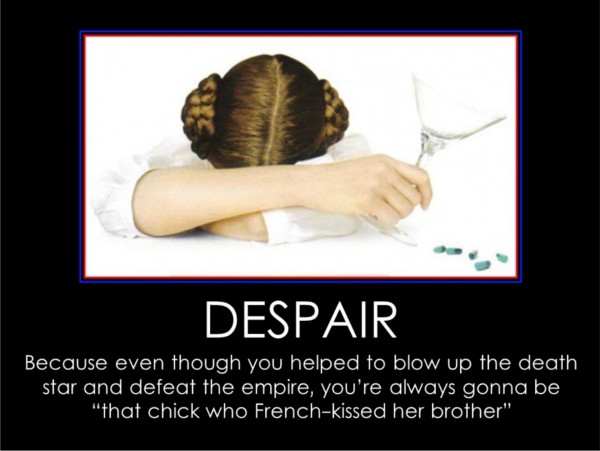
It's a Sunday, and I'm having one of those "I can't get ANYTHING done days". Weekend, actually, as this funk started Friday night.
I have a long list of projects, and I can't seem to make any progress on them. I've printed a few new car cards, created a few new waybills., and added a few trees to the hill, but it is just a drop on the bucket of my multi-page to-do list. Ugh.
Maybe I'll just go for a walk and clear my mind. The to-do list will be there when I get back.
Do you ever question your artistic skills?
Apr 24, 2016

I differentiate "artistic" skills from "modeling" skills, although they can be similar in many respects.
In my mind, you can learn modeling skills. Show someone how to ballast a section of track, and they can pretty much get the hang of it after a bit of practice.
Artistic skills, the ability to envision a scene and then create it, is an entirely different situation. I don't have that skill, I can look at a blank area on the layout and know what I want to do with it, but there is a disconnect between my vision and my execution of that vision. I get stuck in the analysis of making it happen - how tall is that tree, I should measure the length of that building, etc. Others with the artistic skill can just dive in and make it happen. It's often been called "analysis paralysis", and that may be part of it. But I just don't have the "knack" when it comes to the artistic aspect of our hobby.
I am grateful to have train friends that DO have that artistic skill. And I am in awe of their talents. They come over and take a look at the situation and accomplish more in one evening than I can in a week of evenings! Afterward, as I am alone and admiring their work, I say to myself "Hey, I could do that!", but then reality creeps in and I realize that "No, I couldn't". I could copy somebody else's work, but it's the original concept that contains the artistry. Anybody can make a copy of a work of art, but it took a true artist create the first one.
But is it "Modeling"?
Apr 17, 2016
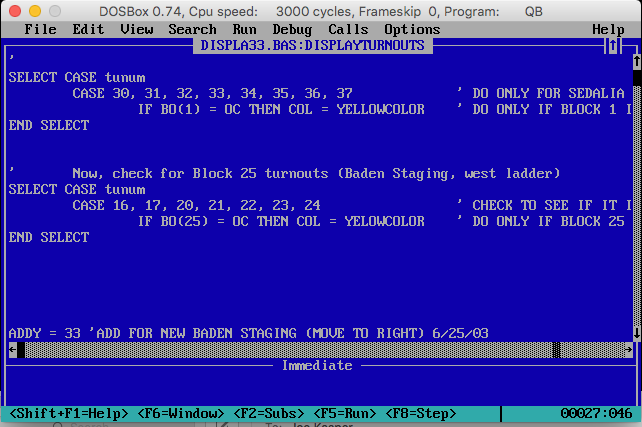
Today, I spent all day in the basement, working on the layout. I didn't build or paint rolling stock. I didn't work on scenery or track or ballasting. I didn't speed match or consist locomotives. I didn't install tortimusses or string yet another mile of wire beneath the layout.
I worked on the computer program the runs the layout.
All.
Day.
Long.
So, does that count as a day of "modeling"? To me it does! I worked on the dispatcher's screen, getting the staging ladder turnouts to show the occupancy state of the ladder blocks, so the dispatcher can easily see when a train is entering and leaving the staging yards. It may not seem like much to describe, but it really adds clarity to the dispatcher's screen, and, therefore, will (presumably) make life a bit easier for the dispatcher. That was the goal of the whole exercise, anyway. Along the way, I remove some extraneous code that is obsolete since the conversion to DCC a couple of years' back. The code removal will improve the loop cycle time a tiny bit, which is already at a satisfactory 12 cycles per second.
My ruminations tonight are centered on the primary appeal of this hobby to me, namely the variety of activities and interests that model railroading offers. Don't want to do scenery tonight? Fine, build or paint a car. Do some photography. Work on some operations paperwork. There are plenty of varied activities to keep a person engaged. When you add an electrical/computer/programming aspect to the mix, you have no cause to become bored with the hobby.
Now, I don't code much these days; the program that I use to run the Mighty MKT is mature and stable, and has been refined over the years. But I was able to dispatch the layout a bit during a recent operating session, and I noticed a few things that could use some improvement. So I spent the day in the coding chair making some new and some long-overdue tweaks and improvements. Working on the program has reminded me of the beauty and power of the Computer/Model Railroad Interface (C/MRI) - with just a few lines of code, you can add a feature or change a feature. Try that with a hard-wired system!
Having made these changes, I may not modify the program for several weeks or even months - like I said, it works pretty well. But it's nice to know that my coding chops are still decent.

The Components of a Scientifically Perfect Apology
Apr 16, 2016
Often, simply saying “I’m sorry” isn’t enough. A decent apology should hit on multiple aspects of your wrongdoing. According to a recent study, there are six components you need to cover if you want to craft the perfect apology, and some are more important than others.
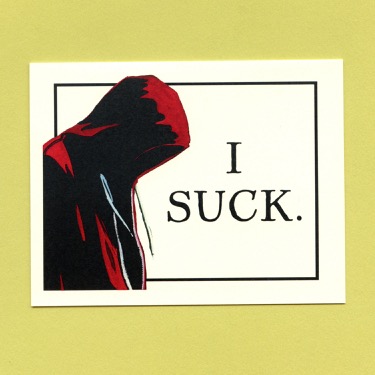
The study, led by Roy Lewicki, professor emeritus of management and human resources at The Ohio State University’s Fisher College of Business, and published in the journal Negotiation and Conflict Management Research, suggests that the most effective apologies contain these six elements:
The study also suggests that some of these elements actually carry more weight than the others. According to Lewicki, the most important element of an effective apology is acknowledging your responsibility. If something is your fault, say that it is. The second most important element, says Lewicki, is your offer of repair. If you say that you want to fix things, and explain how, your apology will go a lot further. The least effective element was the request for forgiveness. If there’s one things you leave out of your apology, make it that.

The study, led by Roy Lewicki, professor emeritus of management and human resources at The Ohio State University’s Fisher College of Business, and published in the journal Negotiation and Conflict Management Research, suggests that the most effective apologies contain these six elements:
- Expression of regret
- Explanation of what went wrong
- Acknowledgment of responsibility
- Declaration of repentance
- Offer of repair
- Request for forgiveness
The study also suggests that some of these elements actually carry more weight than the others. According to Lewicki, the most important element of an effective apology is acknowledging your responsibility. If something is your fault, say that it is. The second most important element, says Lewicki, is your offer of repair. If you say that you want to fix things, and explain how, your apology will go a lot further. The least effective element was the request for forgiveness. If there’s one things you leave out of your apology, make it that.
Great friends, great times
Apr 08, 2016
I'm always grateful for my train friends. Modeling can tend to be a solitary endeavor - I've spent hours alone at the modeling bench or in front of the computer screening programming the C/MRI or working on the web sites. So an evening spent with like-minded friends is always a treat.
Tonight, Steven and Dan came over to help me with a couple of the least-enjoyable aspects of our hobby: cleaning wheels and cleaning track. I tend to consider this an ordeal, and enduring the process with friends made it almost enjoyable…almost.
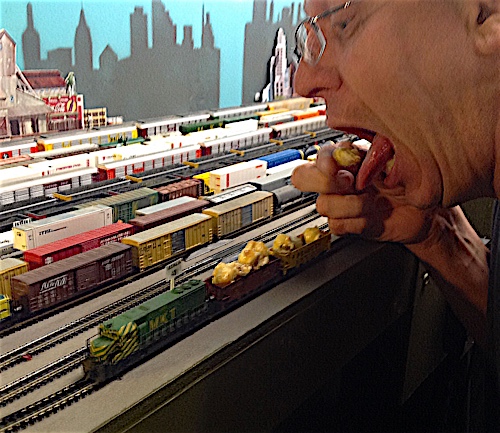
Stevie enjoys a snack from the "Fiddle-Faddle" train. The train provides snack commodities using "just in time" logistics.
Tonight, Steven and Dan came over to help me with a couple of the least-enjoyable aspects of our hobby: cleaning wheels and cleaning track. I tend to consider this an ordeal, and enduring the process with friends made it almost enjoyable…almost.

Stevie enjoys a snack from the "Fiddle-Faddle" train. The train provides snack commodities using "just in time" logistics.
